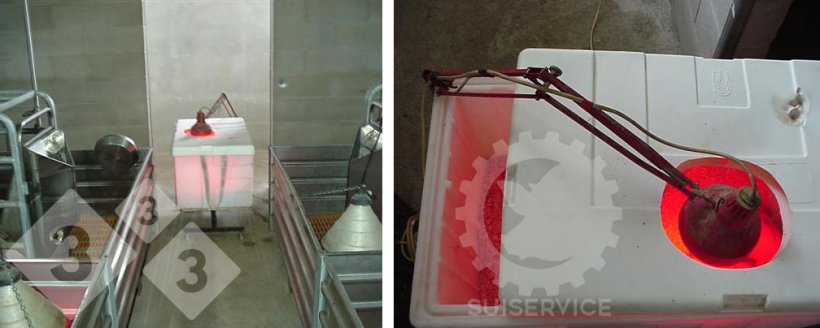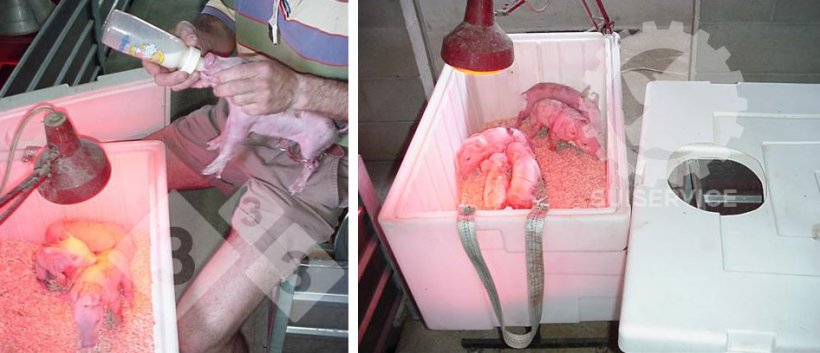Assisting farrowings is one of the key points on sow farms. At this moment, all the skill, experience, and passion that a farmer dedicates to his animals comes into play: it is the first visible result of the effort dedicated to that animal during the previous four months. Each farmer has his or her own way of managing this stage. For some, farrowing assistance is a waste of time, and consider other jobs more important; for others, it is just a matter of going around the room to check for dead piglets, a burned-out bulb, or a nervous gilt. But for the passionate farmer, farrowing is the most rewarding part of the job. In the morning, he or she walks around the farrowing stalls checking the condition of the sows, writes down all the important details on the cards, dries the newborn piglets, and puts them under the heat lamp. If the speed of farrowing slows down for any sow, the farmer is ready to intervene pharmacologically or with a uterine examination to check the condition of the birth canal and, if necessary, to correct the anomalies found. This care becomes increasingly more important the further along in the farrowing process the sow is. In fact, two thirds of neonatal mortality occurs in the last third of piglets born. Especially in older sows, the last piglets are smaller and therefore more at risk: late in the farrowing hypoxia due to premature umbilical cord rupture and placental abruption are frequent.


The first thing to do with these piglets is to reduce neonatal hypothermia by drying them and placing them under a heat source. But when you have to monitor many farrowings, you can't stay at just one farrowing crate to keep an eye on a single piglet; that's where this incubator comes in, a washable plastic container with a lid and infrared heat lamp, with sawdust on the bottom, placed on an old cart, where the weakest piglets from each farrowing are placed to dry out and warm up while you tend to the next sows. This management is especially important in splay-leg piglets, which easily go into hypothermia because they cannot walk.

When we explain this approach, some (those that think "this is a waste of time") smile, others (those that just do "monitoring rounds") listen out of politeness, but the "passionate" ones prick up their ears interested in learning any new technique (if they don't already know it) that will allow them to further reduce piglet losses during and after farrowing.


